Unlocking Windows Server: Specialized Password Reset Disk for Administrator Account
- Home
- Support
- Tips System Rescue
- Unlocking Windows Server: Specialized Password Reset Disk for Administrator Account
Summary
This article explores the creation and usage of Windows Server password reset disk, providing step-by-step guidance. It also discusses alternative methods, specialized tools, and the importance of BitLocker recovery in Windows Server password retrieval.
Note:To create a built-in password reset disk, ensure you use the same Windows Server System and account, and remember the login password beforehand.
In this chapter, we will guide you through the process of creating a password reset disk using a USB flash drive, as well as provide a step-by-step guide on how to use it to recover the local and domain administrator password on Windows Server.
Create password reset disk
To create a password reset disk, follow these steps:1. Insert a USB flash drive into your server.
2. Press the Windows key and search for “User Accounts” in the start menu. Open the User Accounts settings.
3. In the User Accounts settings, click on “Create a password reset disk” on the left-hand side.
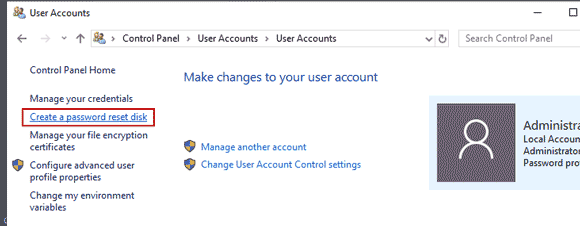
4. Follow the wizard to create a Windows Server build-in password reset USB disk.
Using a Windows Password reset disk
To recover the local or domain administrator password using the password reset disk, follow these steps:1. On the Windows Server login screen, if you enter an incorrect password, a “Reset Password” option will appear. Click on it.
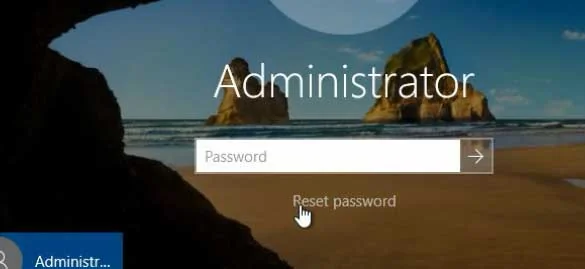
2. The Password Reset Wizard will now open. Click “Next” and follow the wizard to reset the local or domain adminstrator account password.
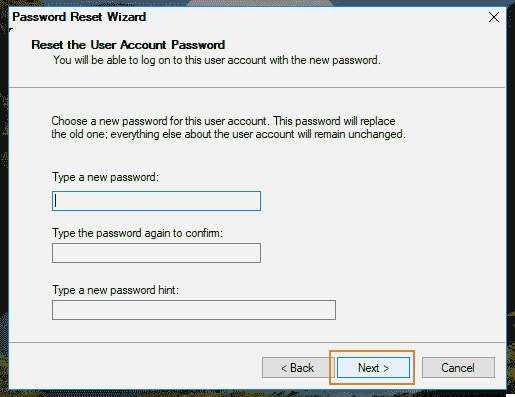
By following these simple steps, you can create and use a password reset disk to recover the local and domain administrator password on Windows Server with ease. It is always recommended to create a password reset disk as a precautionary measure, ensuring that you can regain access to your system in case of any password-related issues.
Step 1: Download and Install Renee PassNow
Start by downloading Renee PassNow from the official website and install it on a different computer that you can access. You can choose the appropriate version based on your computer’s operating system.

Remove Windows Login Password 3 steps for whole password remove process.
Recover the files Recover the deleted files without Windows system.
Transfer the data Transfer the important files of the computer with system.
Multifuctional Data transfer, data recovery, bootable problem recovery can be run without system.
Highly compatible Windows 11/10/8.1/8/7/XP/Vista. UEFI boot.
Remove Login Password Support Windows 11/10/8.1/8/7/XP/Vista. UEFI boot.
Recover the files Recover the deleted files without Windows system.
Transfer the data Transfer the important files of the computer with system.
Step 2: Create a Bootable USB or CD/DVD
Launch Renee PassNow and insert a USB flash drive or blank CD/DVD into the computer. Select the option to create a bootable media. Follow the on-screen instructions to complete the process.
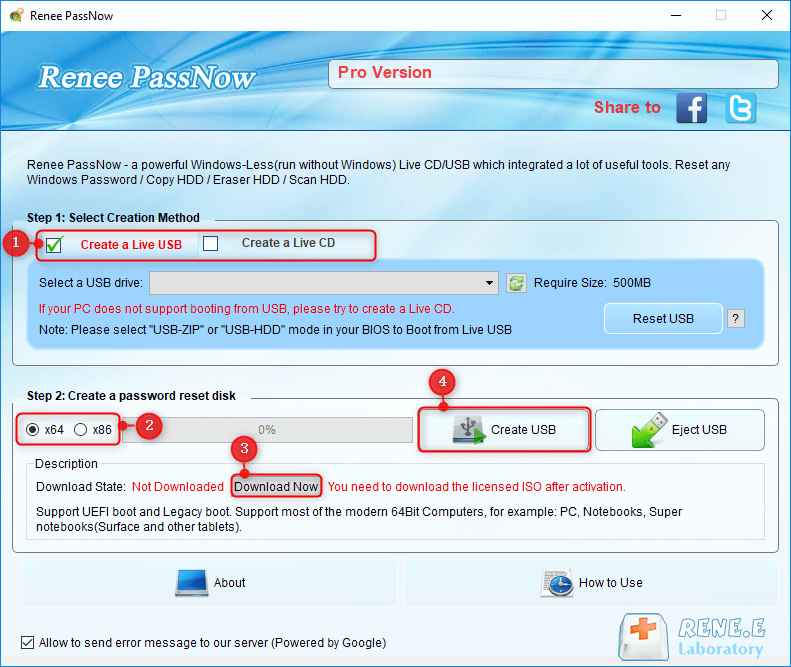
Step 3: Boot the Locked Server from the Bootable Media
Insert the bootable USB or CD/DVD into the locked Windows Server computer. Restart the computer and enter the BIOS settings by pressing the appropriate key (usually F2 or Delete). Configure the boot order to prioritize the bootable media.

Step 4: Reset the Password
After successfully booting from the bootable media, Renee PassNow will load. Select “PassNow!” function after booting from the new created Windows password reset disk.
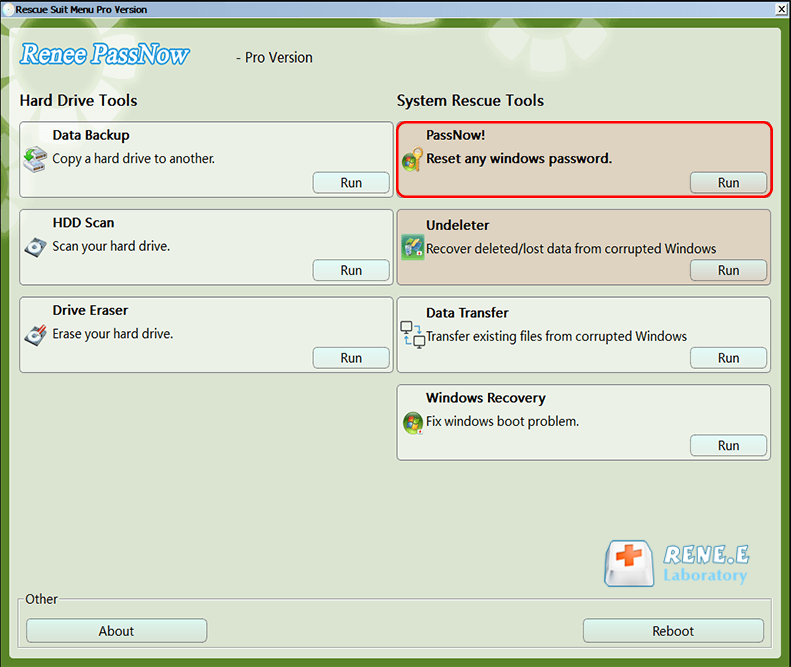
Step 5: Resetting the Password
Choose the user account for which you want to reset the password. Then, click on the “Reset” button. Renee PassNow will remove or reset the password for the selected user account.
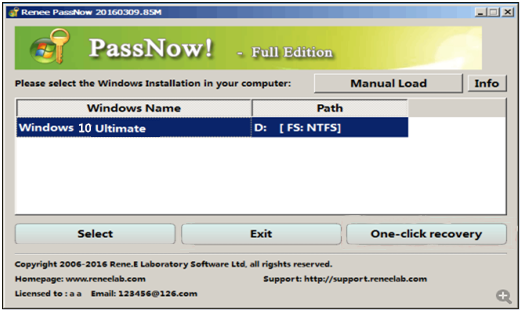
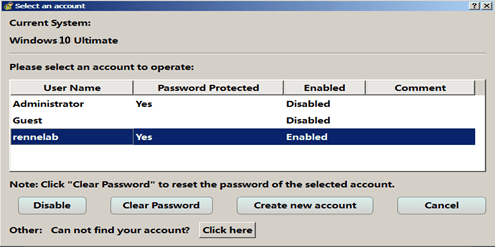
Step 6: Reboot the Server
Once the password is reset, remove the bootable media from the server and restart the computer. You will now be able to log in to Windows Server without a password.
Step 7: Create a New Password (Optional)
After logging into Windows Server , it is recommended to create a new password for security purposes. Press Ctrl+Alt+Delete on your keyboard and select “Change a password” option.
Following these steps will allow users to change the default Admin password on their Windows Server installations even if the original password is forgotten. Remember to choose a strong and unique password to enhance the security of your system.
Account Type : Local Accounts
A local account is specific to a single computer and is commonly used for personal use or in small-scale environments. When a local account is created, the username and password are stored locally on the computer itself. The password for a local account is stored in the Security Account Manager (SAM) database, which is a file located in the Windows system directory.Account Type : Domain Accounts
A domain account is used in a network environment managed by an Active Directory (AD) domain controller. This type of account allows users to log in to any computer within the domain using a single set of credentials. The username and password for a domain account are stored on the domain controller, not on individual computers.Password Storage
Windows stores passwords using a hashing algorithm to enhance security. When a user creates or changes their password, the input is hashed using the MD4 or NTLM hashing algorithm, depending on the Windows version. The hashed password is then stored in the SAM database for local accounts or in the Active Directory database for domain accounts.Additionally, the new context mentions the ability to create Organizational Units (OUs) within Active Directory to organize user accounts and other objects. OUs allow for easier delegation of administrative control and management of users using Group Policy. OUs are different from default containers as they can have group policies applied to them, while default containers cannot.
| Account Type | Features | Password Storage |
|---|---|---|
| Local Account | Specific to a single computer/ commonly used for personal use or in small-scale environments | Stored locally on the computer in the Security Account Manager (SAM) database |
| Domain Account | Used in a network environment managed by an Active Directory (AD) domain controller/ allows users to log in to any computer within the domain using a single set of credentials | Stored on the domain controller(Server)/ not on individual computers |
With a password manager, you only need to remember one master password. The manager will then generate strong and unique passwords for your Windows Server account, ensuring maximum security.

Overall, incorporating a password manager into your password management strategy is an effective way to avoid the loss of your Windows Server password in the future.
Popular password management apps to securely track your passwords include:
| Product Name | Platform | Price | Features |
|---|---|---|---|
| Bitwarden | Cross-platform | Free/ Premium version available | Best overall password manager/ smooth password capture and replay/ revoke device access from anywhere/ secure password sharing/ supports multiple forms of multi-factor authentication/ includes VPN/ scans for compromised accounts/ retains full password history |
| 1Password | Cross-platform | Premium | Best premium password manager/ watchtower password monitoring feature available for mobile users/ slick and attractive mobile apps/ intuitive password organization/ supports multi-factor authentication |
| NordPass | Cross-platform | Premium | Best password manager for business account administrators/ supports secure credential sharing/ supports multi-factor authentication via app and security key/ mandatory multi-factor authentication option for business accounts/ data breach scanner and actionable password health report/ audited |
| Keeper | Cross-platform | Premium | Best password manager for secure cross-platform password management/ easy-to-follow tutorial for new subscribers/ smooth password capture and replay/ well-designed apps and browser extensions/ secure password sharing and inheritance options/ supports multiple forms of multi-factor authentication/ retains credential and file history |
| Dashlane | Cross-platform | Premium | Best password manager for browser tools/ secure sharing and password inheritance features/ security dashboard/ retains a history of notes and passwords/ supports many platforms and browsers |
| Enpass | Cross-platform | $24 per year (individual)/ $36 for the first year (family)/ $100 (lifetime individual) | Allows storage of vault in a location of your choosing |
| KeePass | Windows/ unofficial ports available for other platforms | Free | Completely open source and highly customizable |
| Apple iCloud Keychain | Mac/ iOS | Included with Apple ID | Built-in password manager for Apple devices |
| ExpressVPN Keys | Browser extensions (Chrome/ Edge/ Opera/ Brave/ Vivaldi)/ iOS/ Android | Included with ExpressVPN accounts | Password management solution by ExpressVPN |
| Zoho Vault | Cross-platform | Free/ Premium version available | Generous free plan with no limits on device-syncing or password storage/ syncs across Windows/ macOS/ Android/ and iOS devices/ supports multi-factor authentication/ accessible across all browsers on any platform/ handles multipage logins/ imports passwords from browsers |
| LogMeOnce Password Management Suite Ultimate | Cross-platform | Free version available/ paid version with additional features | Totally free version with no limit on saved passwords or devices used/ syncs across Windows/ macOS/ Linux/ iOS/ and Android/ new streamlined interface/ vast number of features/ supports multi-factor authentication |
| Password Boss | Cross-platform | Free version available/ premium version available | Secure sharing and password inheritance features/ security dashboard/ retains a history of notes and passwords/ supports many platforms and browsers |
| RoboForm Everywhere | Cross-platform | Premium | Strong form-filling abilities/ capable password management/ syncs across many device types and browsers/ generates strong and unique passwords by default |
One such tool is Offline NT Password & Registry Editor, commonly known as chntpw. This open-source software works by modifying the Windows SAM file to remove or reset the password for the administrator account. It can be booted from a CD or USB drive and is compatible with various Windows operating systems, including Windows Server.
Another popular tool is Ophcrack, which uses rainbow tables to crack passwords. Rainbow tables are precomputed tables that contain the hash values of a vast number of possible passwords. Ophcrack compares the hash value of the locked account’s password to the tables to find a match, ultimately revealing the original password.
Apart from these tools, there are commercial software options like PCUnlocker and Passware Kit that offer more advanced features and support for Windows Server. These tools often come with a graphical user interface, making them more user-friendly for those who may not be comfortable with command-line tools.
It is important to note that while these tools are effective in resetting the administrator password, they should only be used in legitimate and legal scenarios. Misuse of these tools can lead to serious consequences and ethical considerations should always be kept in mind.
In conclusion, specialized tools and software for resetting the administrator password on Windows Server provide a valuable solution when one finds themselves locked out of their system. With options ranging from free, open-source tools to commercial software, there is a tool available for every user’s needs and comfort level. However, it is crucial to always use these tools responsibly and within the bounds of the law.
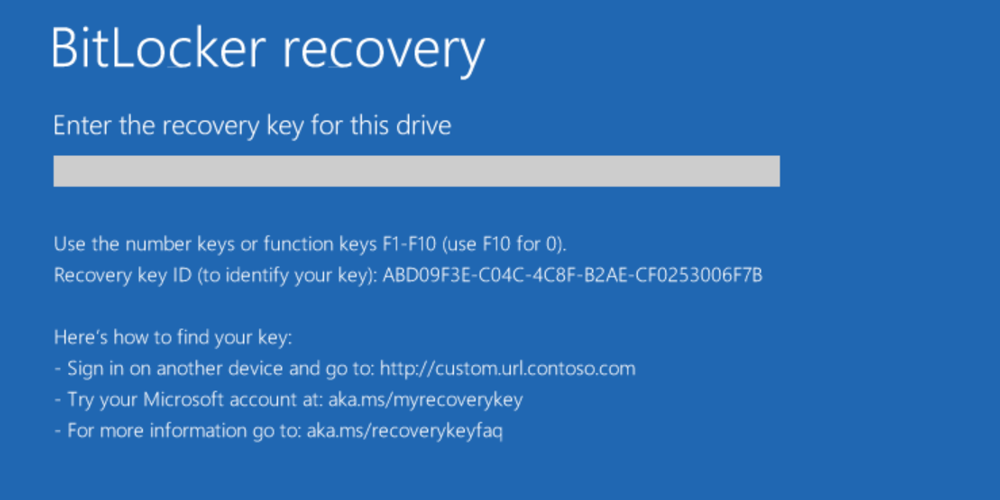
However, with heightened security comes the possibility of locking oneself out of the system if the BitLocker password is forgotten. In such cases, having an understanding of the BitLocker recovery process becomes crucial.
BitLocker Recovery Key
The BitLocker recovery process involves several steps. First, a recovery key is required to access the BitLocker-encrypted drive. This recovery key can be stored in a variety of ways, such as on a USB drive, in a file, or in a Microsoft account. Once the recovery key is obtained, it can be used to unlock the encrypted drive and regain access to the system.
The significance of the BitLocker recovery process lies in its ability to ensure that even if the administrator password is lost or forgotten, access to the encrypted data can still be attained. This is particularly important for businesses and organizations that rely heavily on data security and need to protect sensitive information.
For example, imagine a scenario where an administrator forgets the password to their Windows Server with BitLocker encryption. Without a recovery process, all the data stored on the encrypted drive would be effectively lost. However, by using the BitLocker recovery key, the administrator can regain access to the system and retrieve the encrypted data.
In summary, to reset a BitLocker-encrypted Windows Server system, you need the encryption key and a third-party tool that supports BitLocker partition access..
Relate Links :
Fix Hard drive Not Detected in BIOS
14-12-2023
Ashley S. Miller : Learn how to troubleshoot and resolve the issue "hard drive not detected in bios". Explore possible causes and...
Recover Data from a Laptop Hard Drive that Won't Boot
11-06-2024
Ashley S. Miller : Learn two proven techniques to quickly recover data from laptop hard drive and protect your valuable information.
Unveiling the Perils: Windows Server Default Password and Their Implications
20-08-2023
Ashley S. Miller : Discover the risks of default passwords in Windows Server, as well as vulnerabilities. Learn how to conduct security...
Password Reset Techniques for Windows Server 2022: DSRM, Brute Force, and More
26-05-2024
Ashley S. Miller : Learn how to reset the administrator password on Windows Server 2022 by using Directory Services Restore Mode, brute...




